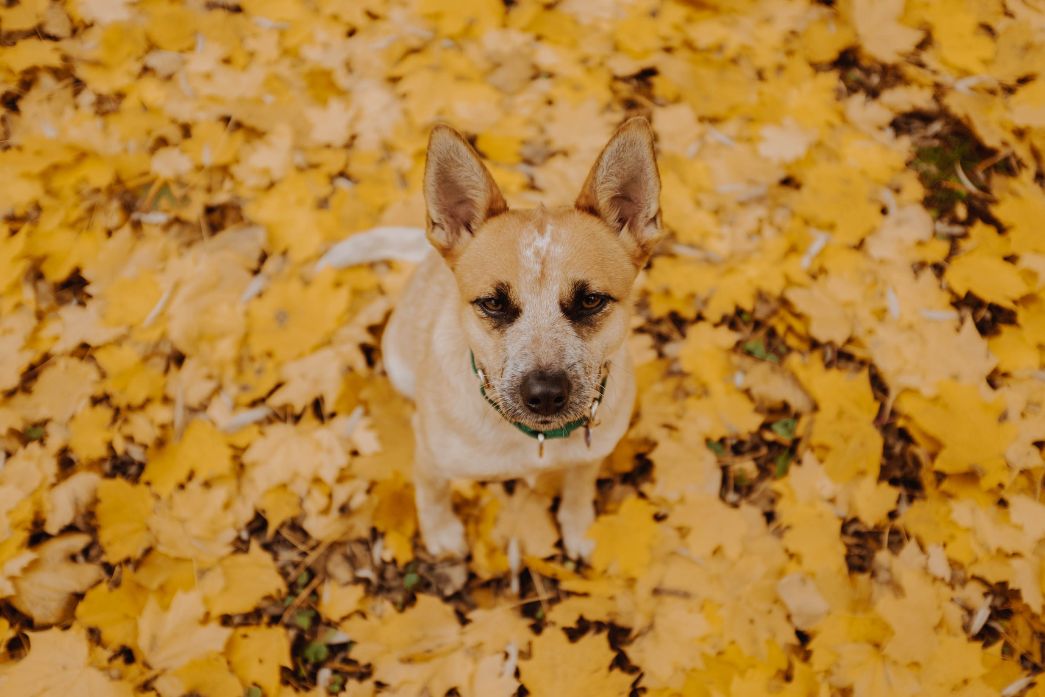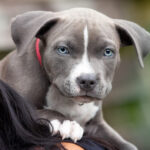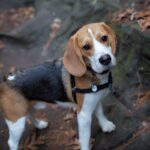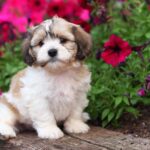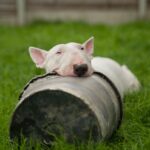Do you want to bring a new puppy into your family’s home? You can find all the information you need about the Red Heeler in this article. From the dog’s coat and appearance to its ancestry, behavioral problems, and health issues, this will be covered.
The Red Heeler is a medium-sized dog breed that was initially bred as a herding breed and is also referred to as the Australian Cattle Dog. Although the Australian Cattle Dog can be blue or red, the Red Heeler will be the focus of this article. Red and Blue Heelers are the same breed of dog; only their colors are different!
Due to their alertness and energy, these devoted and playful dogs also make excellent working dogs. Read on to learn more about the history, traits, and requirements of owning a Red Heeler dog as we go over these topics and more if you’re interested in finding out more.
Where Does the Breed Come From?
In Australia, the Red Heeler was initially bred in the 1800s to herd cattle. Australians needed a dog that could protect and herd sheep and other livestock during the 19th century, even in the sweltering heat. These working dogs became associated with Australia.
The Red Heeler dog was bred to run for extended periods of time and to handle challenging terrain. The Red Heeler was first developed by Australian Thomas Hall by mating an Australian Dingo dog with a Collie breed.
Due to its resemblance to the Australian Cattle Dog in appearance, the new dog breed was given the name Halls Heeler.
Appearance
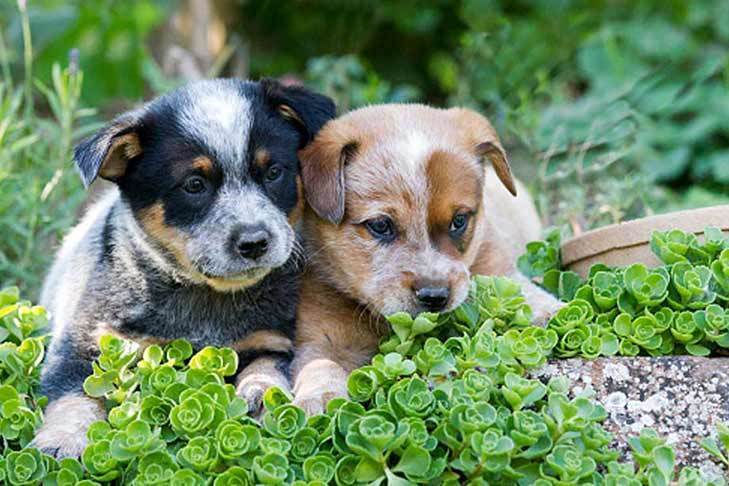
A medium-sized breed, the Red Heeler typically stands between 17 and 20 inches tall, with males typically standing a few inches taller than females. Both males and females can weigh up to 50 lbs in this species. By the time they are about 18 months old, they will typically be their full size and weight.
With a broad head and strong jaw, these dogs are extremely athletic and muscular. They have separated ears on top of their head, resembling the ears of a German Shepherd, sloping shoulders, a level back, strong front legs, and muscular hind legs.
While it is quite common for working dogs in the US to have their tails clipped, this is not the case in the UK, Australia, or Canada. This helps with maneuverability.
Coat and Color
The double coat of the Red Heeler consists of a thick undercoat that is tightly packed with hairs and a straight, stiff upper coat. They shed heavily twice a year and sparingly the rest of the time.
Although we will discuss this in more detail later, they are relatively low-maintenance dog that doesn’t require much grooming.
The Red Heeler has white hair at birth that gradually turns brown as it gets older. The Red Heeler’s distinctive red coat is made up of these evenly spaced brown hairs, just as the Blue Heeler’s blue appearance is caused by gray hairs in a white coat.
Health
A responsible breeder will examine breeding stock for diseases like deafness, progressive retinal atrophy, or PRA, which results in vision loss, and hip dysplasia. Regularly cleaning his teeth and checking his ears for foreign objects and wax buildup are also important for ACDs.
The Red Australian Cattle Dog typically lives 12 to 15 years and is considered to be in generally good health. Yet, the Red Heeler is vulnerable to suffering from several genetic conditions, such as:
- Retinal atrophy
- Rod-cone degeneration
- Blindness
- Arthritis
- Elbow dysplasia
- Hip dysplasia
- Skin problems and allergies
Grooming
Australian Cattle Dogs have smooth, double-layered coats that shield them from the elements because they were bred to work outdoors. An Australian Cattle Dog usually only needs a quick brushing once a week and the occasional bath because this coat doesn’t smell or leave an oily residue.
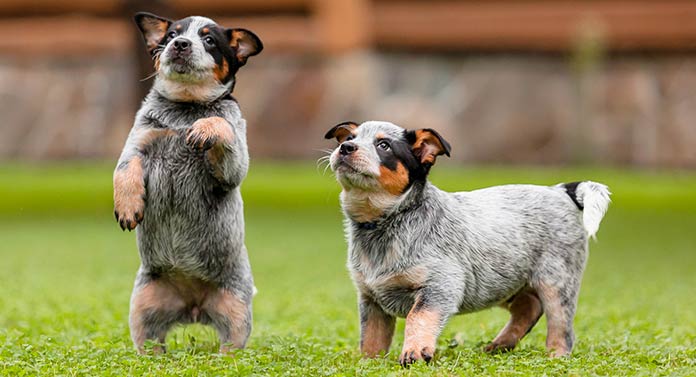
But remember, the ACD loses his undercoat twice a year. He will need a thorough brushing out every few days during the shedding season to get rid of the dead hair, using a short-bristle brush and possibly a comb as well. The Australian Cattle Dog’s nails should be cut frequently, as with all breeds.
Exercise
The Australian Cattle Dog requires more than just a quick walk and some yard playtime because it is such an active, high-energy dog. A job is essential for the happiness and health of ACDs. This might not be a problem on a working farm, especially if there are animals to herd.
Other people’s homes provide him with a good outlet for his energy by taking him on daily or nearly daily runs with his owner.
Participating in dog sports is a great option because it allows the Australian Cattle Dog and owner to enjoyably channel the breed’s drive and energy. Dog sports include obedience and agility.
Training
For the Australian Cattle Dog, early socialization and obedience training are essential. The only time the ACD is truly happy is when they are working. They are an intelligent, active breed. As a result, participation in sports like agility, herding, and obedience as well as ongoing training is strongly advised.
This can require a significant time commitment from the owner, but taking part with your dog strengthens your bond and is enjoyable for both of you. Remember that an intelligent, active dog will become bored if left unoccupied, and an active, bored dog may become destructive.
Nutrition
The Australian Cattle Dog should thrive on a premium canine diet, whether it is prepared at home or in a commercial kitchen under the guidance and approval of your veterinarian. No matter what stage of life the dog is in—a puppy, adult, or senior—its diet should be suitable.
Being such athletic and active dogs, Australian Cattle Dogs require proper nutrition, so make sure your dog is receiving it. Find out which foods fit the bill for dogs and which should be avoided.
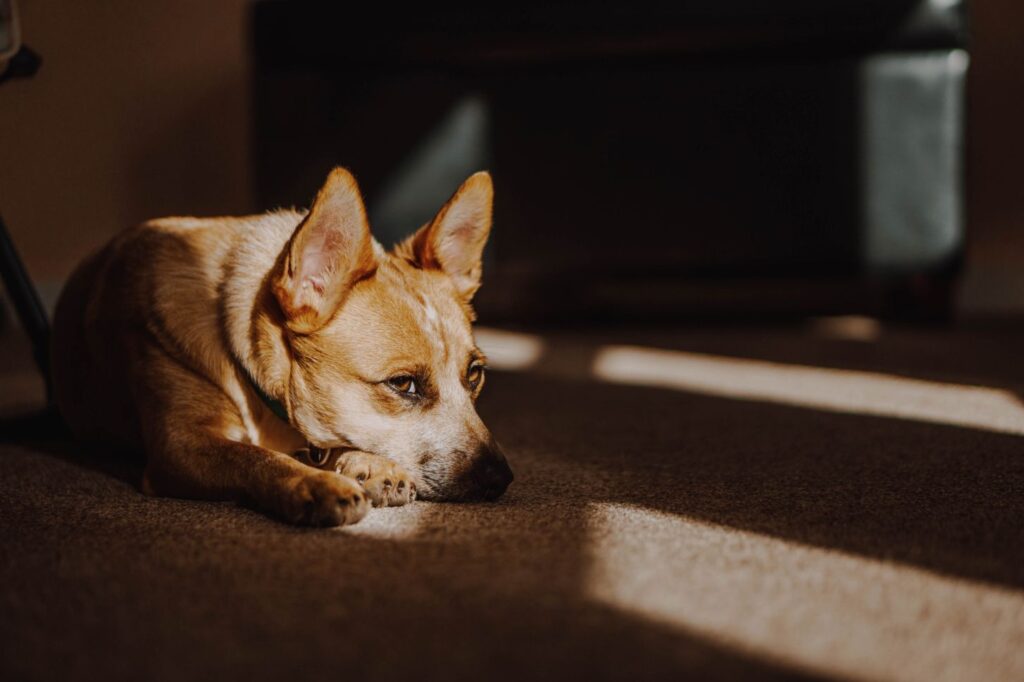
If you have any worries about your dog’s weight or diet, consult your veterinarian. Always have access to clean, fresh water.
Temperament
The Australian Cattle Dog is a devoted and affectionate dog that enjoys spending time by its owners’ sides. They enjoy playing with and interacting with people, and because of their high intelligence, they are very focused puppies. They can be a little distant and don’t particularly enjoy cuddling, though.
The Red Heeler is fiercely devoted to their family and will keep an eye out for anything unusual. Since they won’t bark or let you know something is wrong unless they feel threatened or in danger, they make good guards and watch dogs.
These puppies are very energetic and enjoy running around. However, because they are working dogs, they have a high prey drive and are known to chase things, so this is something to be aware of. Fortunately, they are also easily trainable due to their intelligence. They thrive in environments where they have work to do and enjoy their work.
The Red Heeler is a bored dog who may act out in destructive ways like barking, chewing, chasing, digging, and nipping at heels. Because of this, you should keep them active and mentally engaged to keep them occupied.
Lifespan
The Red Heeler lives a relatively long life, much like the Blue Heeler. The typical lifespan of this purebred dog is 12 to 15 years.
History of the Red Heeler
Due to their propensity to nip at the heels of cattle to encourage the direction of movement while being herded, Australian Cattle Dogs acquired the nickname “Heeler.” Their special qualities, such as their high energy levels and stamina, were desired to cope with the arid terrain and high temperatures of the Australian outback. They were bred to herd cattle over long distances.
Because of their history, they are intelligent dogs who are also very playful and energetic. When trained and socialized properly, Red Heelers also do well as pets rather than working dogs, but you’ll need to make sure you have enough time to spend with them outside.
The Original Cattle Dog, from New South Wales, and The Queensland Heelers, a variation of the breed from the 1940s, are the two different types of Australian Cattle Dogs, and as a result, there are two different types of Heelers.
They’re both now referred to as Heelers. Frequently, the Queensland Heeler or Blue Heeler are other names for the Red Heeler. Fear not—they are the same dogs, just painted in various hues!

